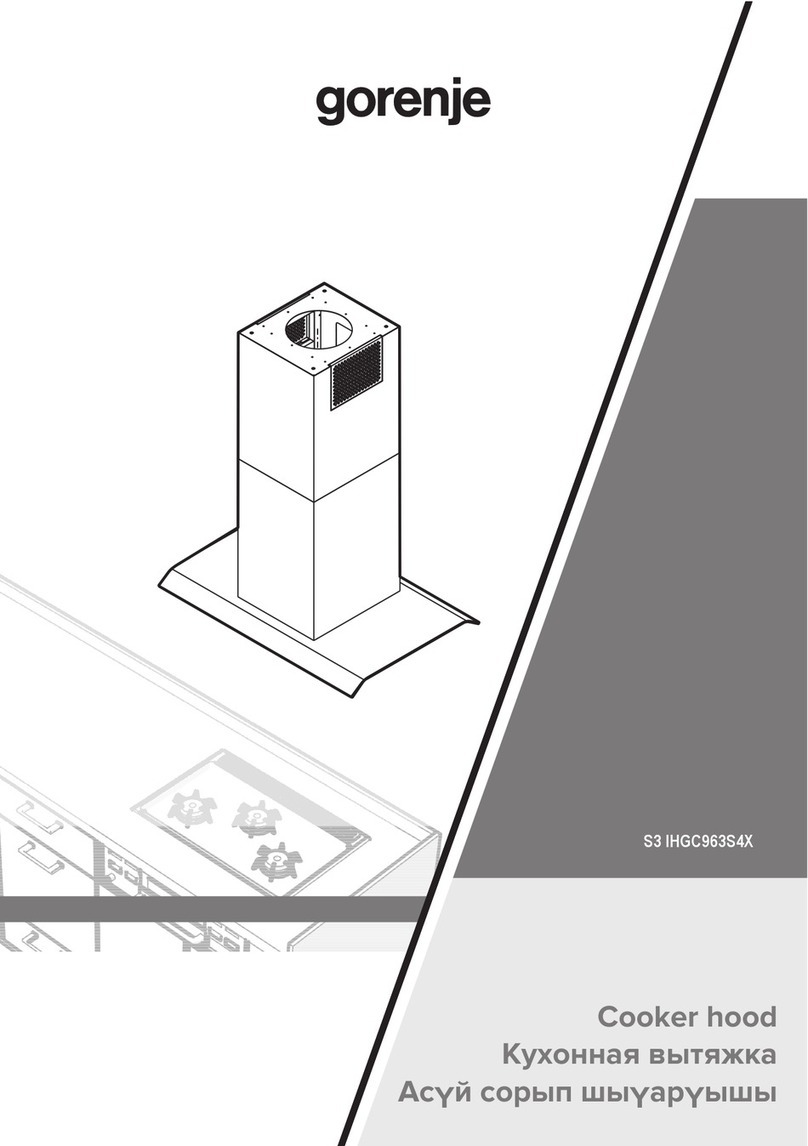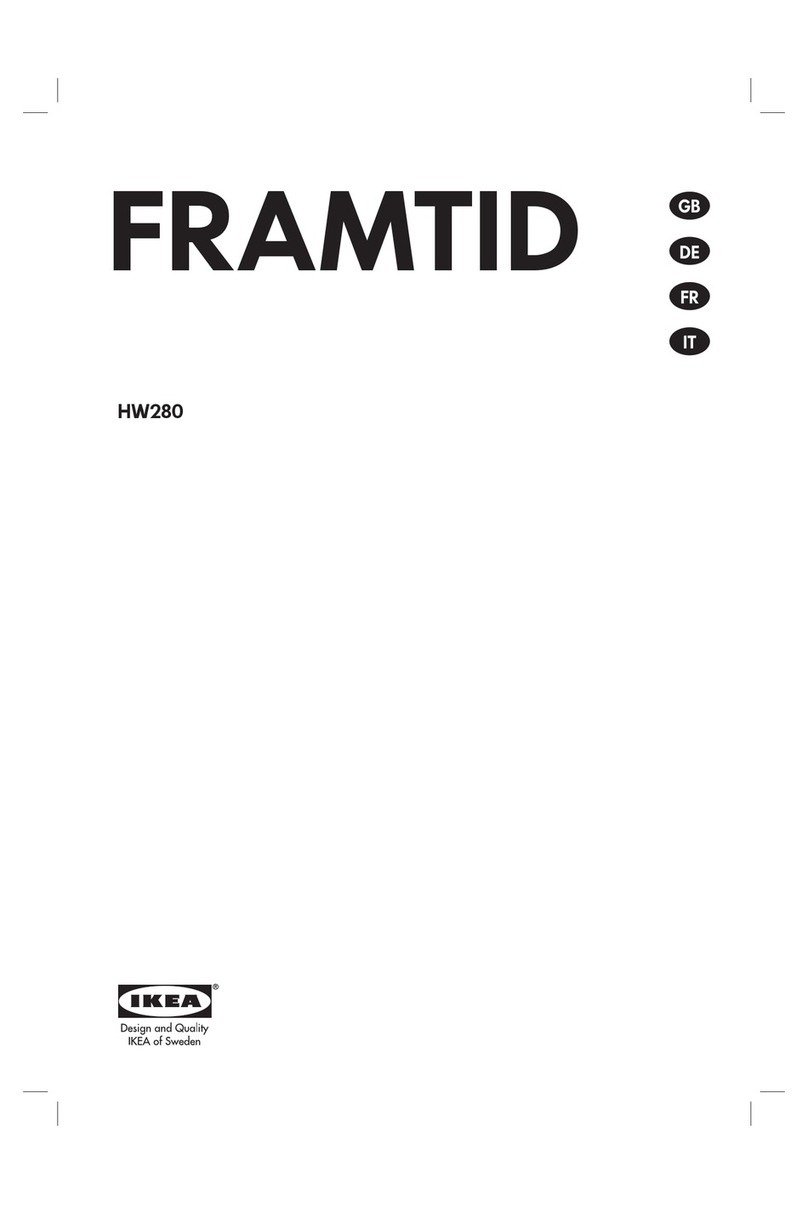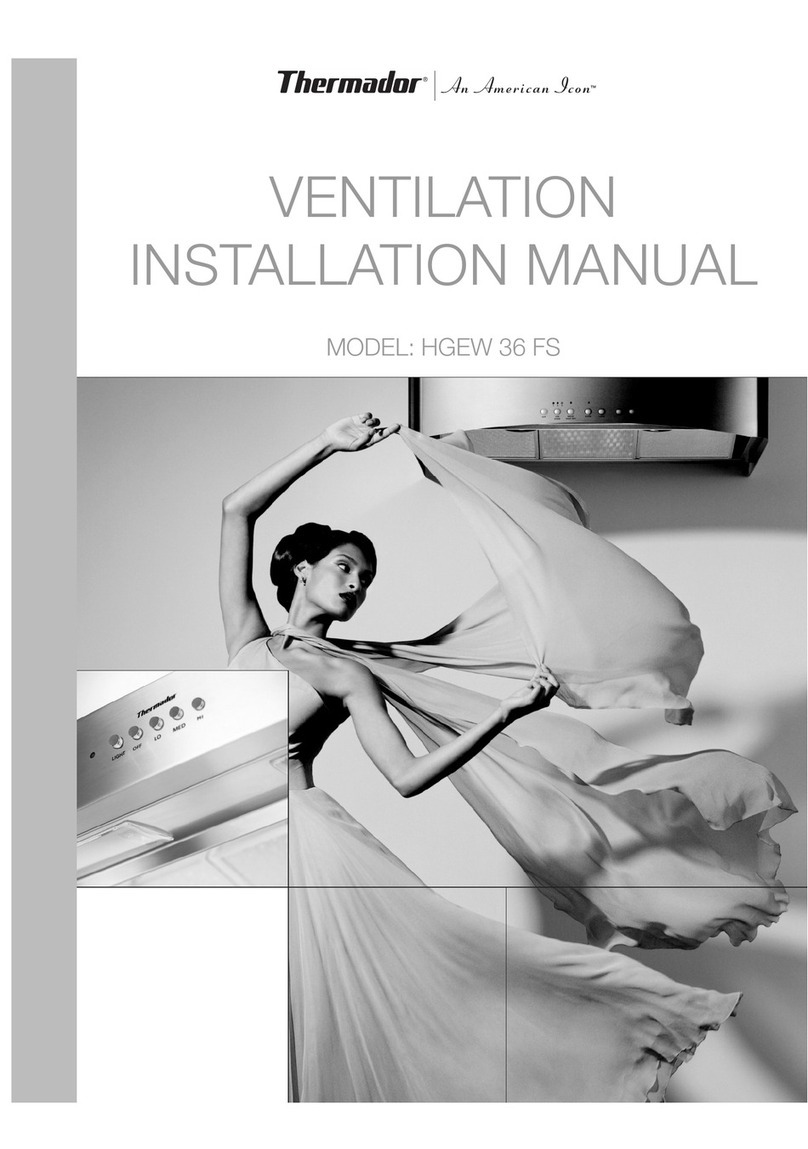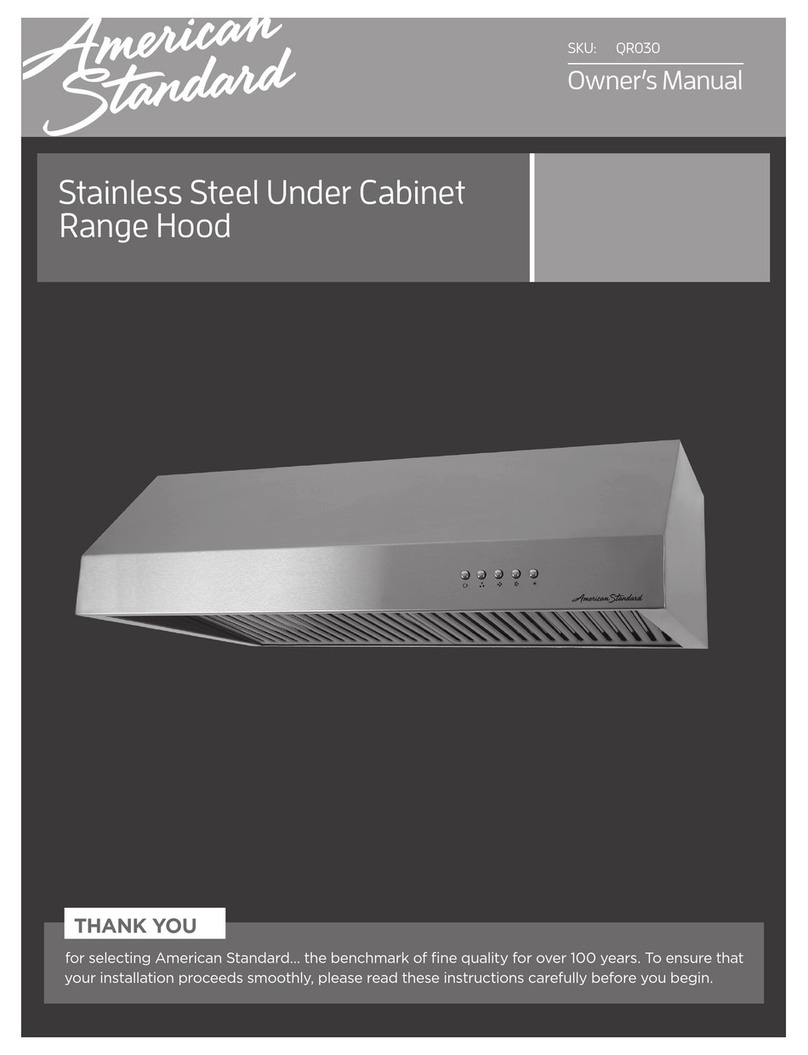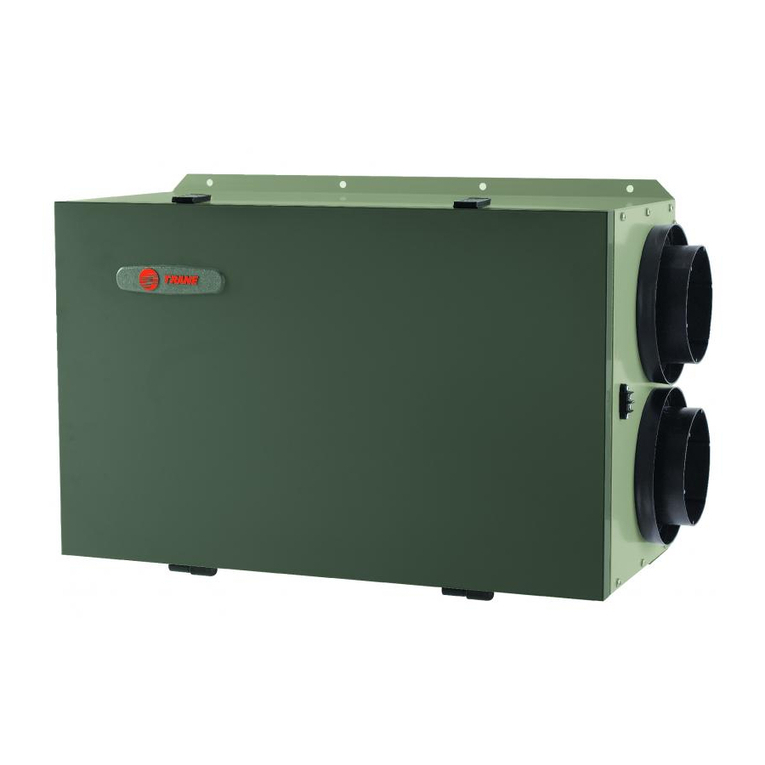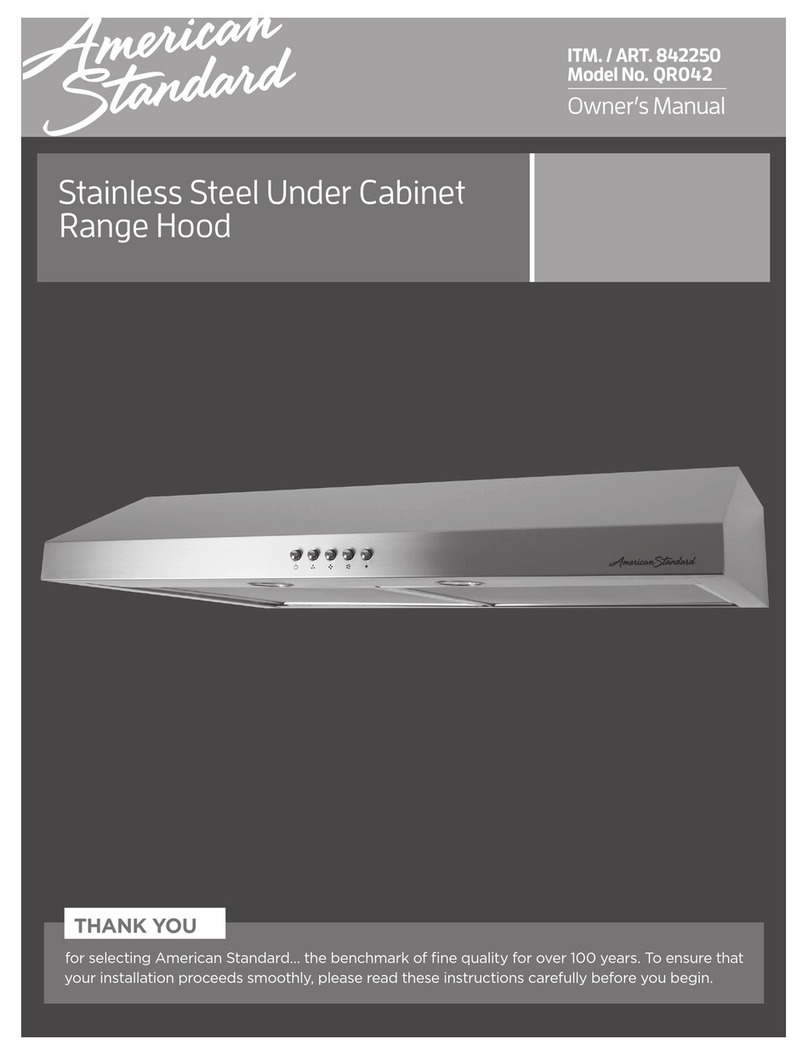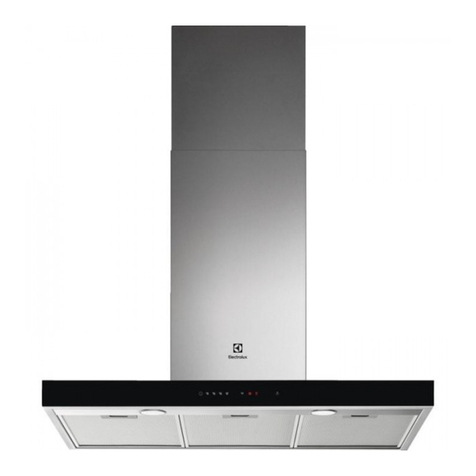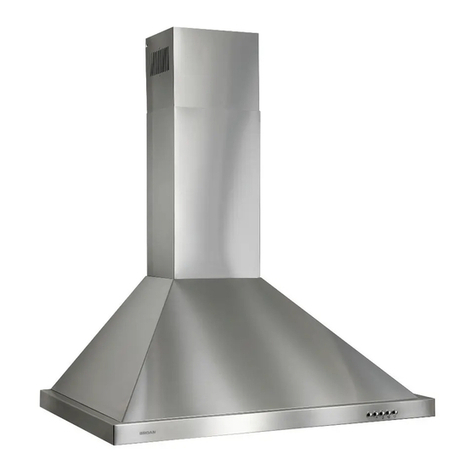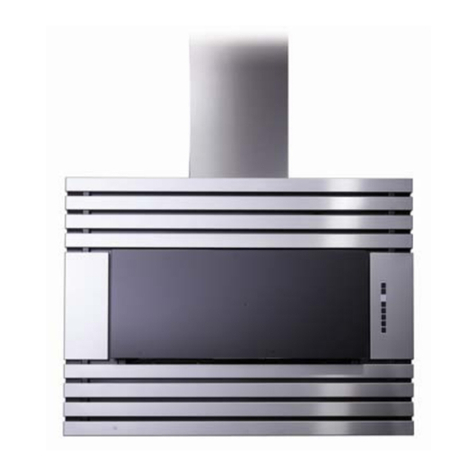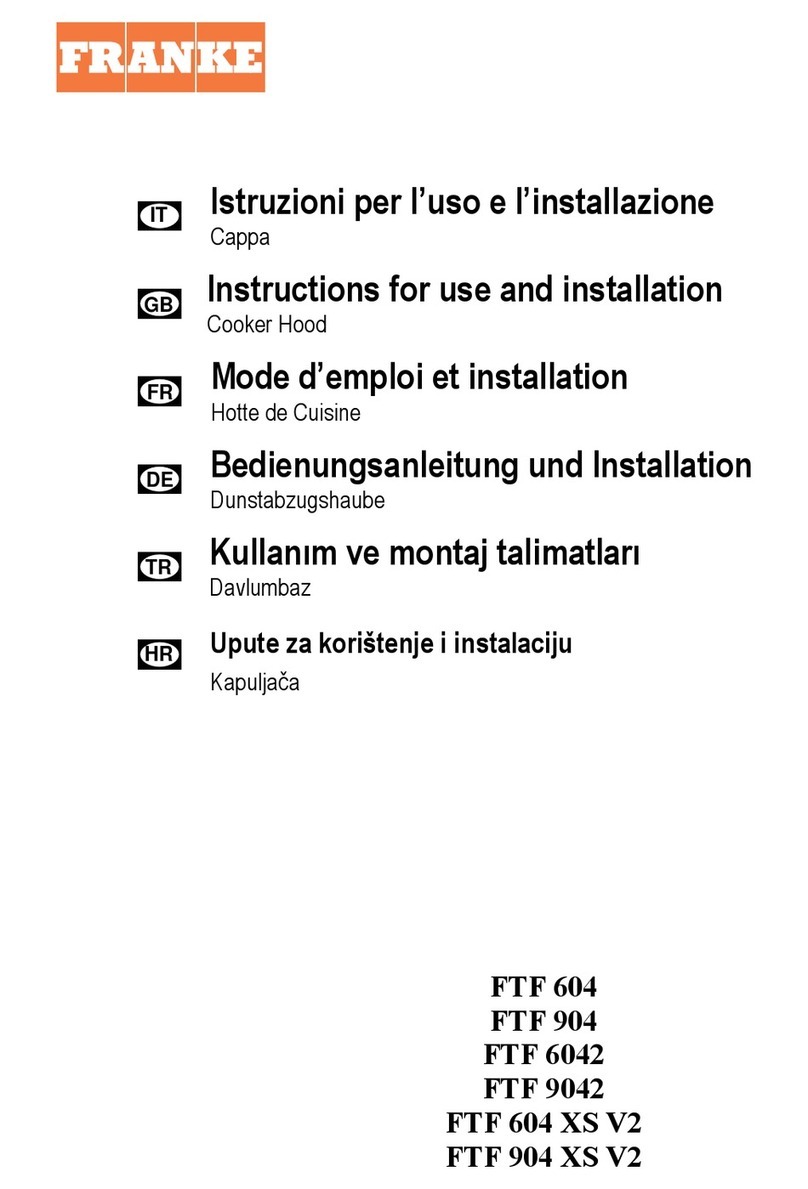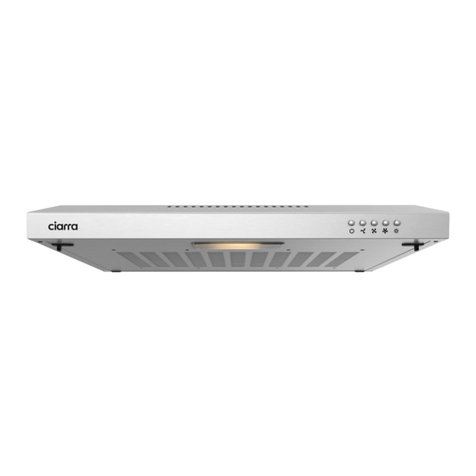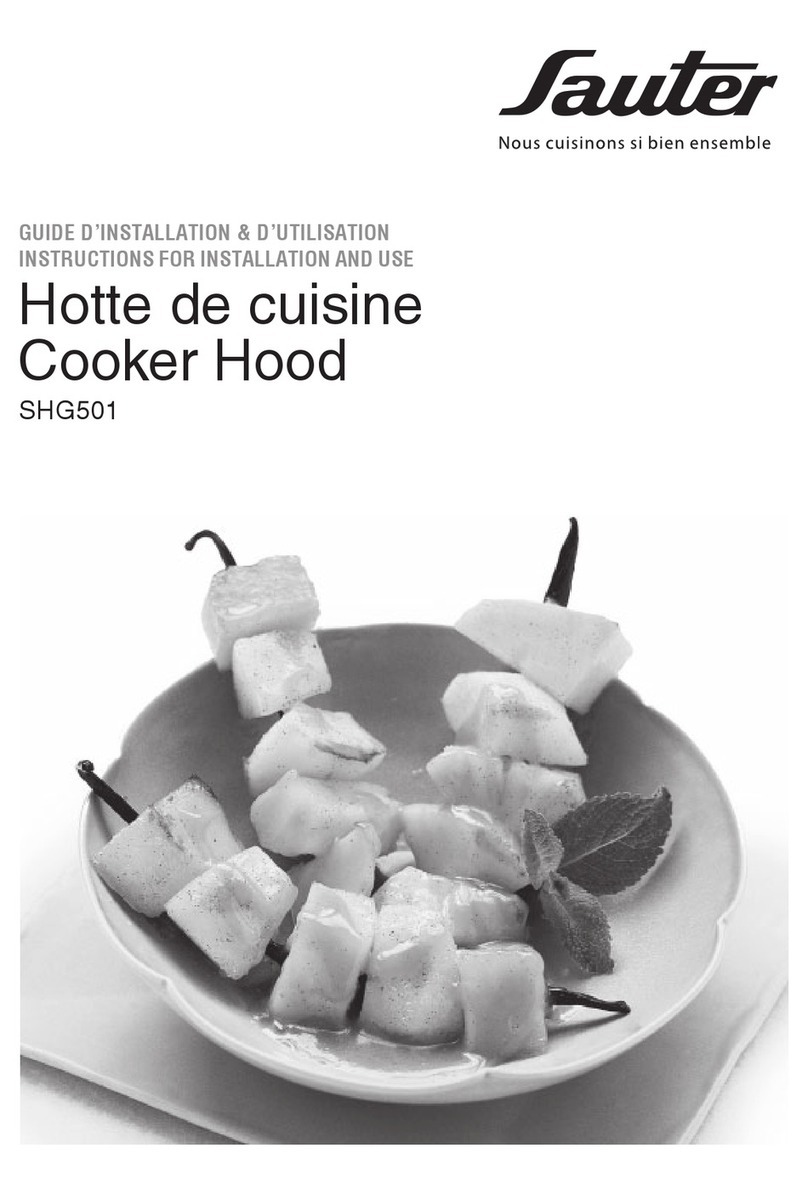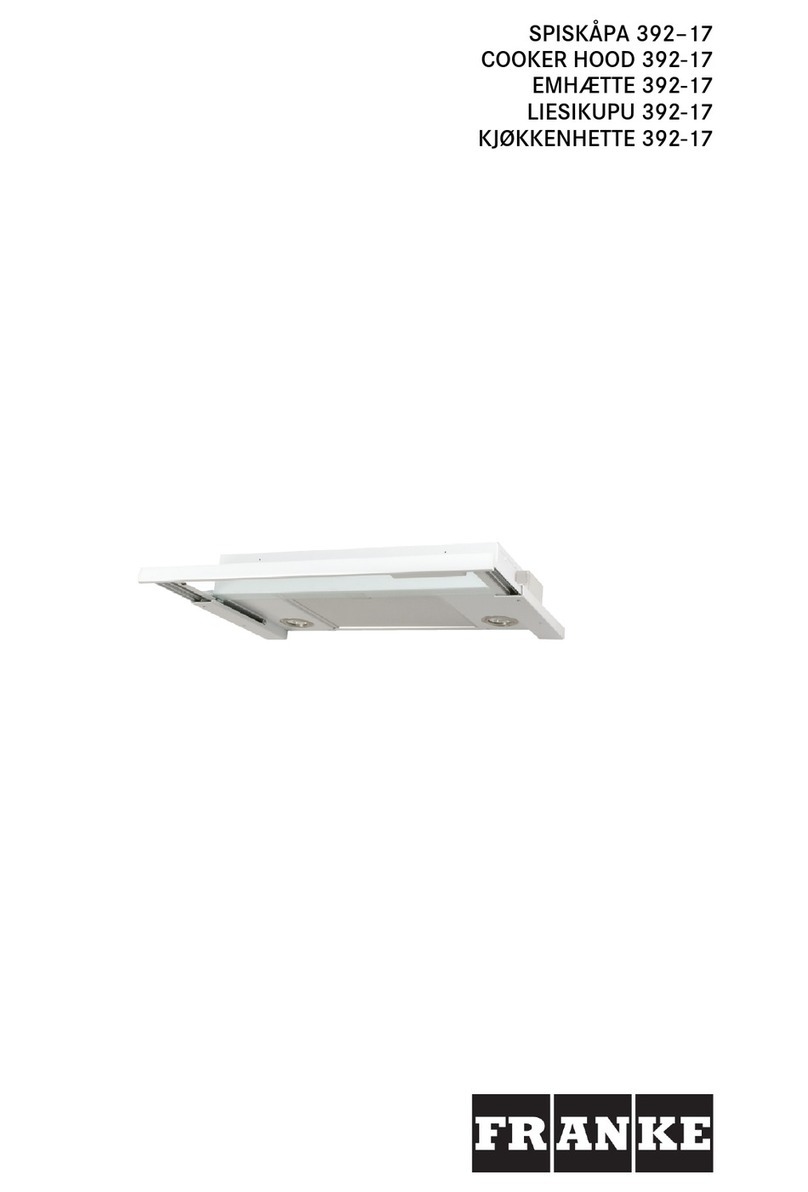
2
Table of Contents
Table of Contents ...................................2
Safety Information ..................................2
Warranty ..........................................4
One-Year Manufacturer Defect Warranty................4
Warranty Claim Procedure ...........................4
Pre-Installation.....................................5
Planning Installation ...............................5
Tools Required ....................................5
Package Contents .................................6
Installation ........................................7
Removing Existing Range Hood .......................7
Venting..........................................7
Cabinet Preparation................................8
Damper .........................................9
Range Hood .....................................10
Electrical Connection..............................11
Bottom Panel & Filter..............................12
Operation. . . . . . . . . . . . . . . . . . . . . . . . . . . . . . . . . . . . . . . . . 12
Care & Maintenance ................................13
Troubleshooting ...................................15
Wiring Diagram..................................16
External Diagram ................................16
Service Parts......................................17
Safety Information
CAUTION: Always wear safety goggles and gloves during
installation to prevent personal injury.
WARNING: To avoid danger of suffocation, keep the
plastic that covers the unit away from children. Do not use
in cribs, beds, carriages or playpens. The bag is not a toy.
Discard bag and all other packing materials immediately
after removing the unit. Do not reuse the bag.
WARNING: To reduce the risk of fire, use only metal duct
work. Never use plastic vents.
Carefully check the unit prior to installation to ensure there is no
damage. Do not dispose of any packaging until you are satisfied
with this product.
1. PLEASE READ AND SAVE THIS GUIDE BEFORE INSTALLING OR
USING THIS PRODUCT. Store the guide in a safe place so you
will know where it is when you want to refer to it. Save this
guide for local electrical inspector’s use.
2. THE INSTRUCTIONS IN THIS MANUAL ARE INTENDED FOR
QUALIFIED INSTALLERS, SERVICE TECHNICIANS OR OTHER
QUALIFIED PERSONS. Never attempt to install this appliance
yourself. Installing the unit without an electrical and technical
background could result in injury.
3. OBSERVE ALL GOVERNING CODES AND ORDINANCES. It is
the customer’s responsibility to contact a qualified electrical
installer and assure that the electrical installation is adequate
and complies with the National Electrical Code or CSA
standards and all local codes and ordinances.
4. The manufacturer and distributors decline all responsibility in
the event of failure to observe the instructions given here for
installation, maintenance and suitable use of the product. The
manufacturer and distributors further decline all responsibility
for injury due to negligence and the warranty of the unit
automatically expires due to improper maintenance.
5. APPROVED FOR RESIDENTIAL USE ONLY.
INSTALLATION
1. PERSONAL INJURY HAZARD - Two or more people are required
to move and safely install this range hood because of it’s
weight and size. Failure to properly lift range hood could result
in damage to the product or personal injury.
2. SEVERE INJURY - The range hood may have very sharp
edges. Please wear protective gloves to remove any parts for
installation, cleaning or servicing.
3. Remove any hazardous objects around the area when
installing.
4. Sufficient air is needed for proper combustion and exhausting
of gases through the flue (chimney) of fuel burning equipment
to prevent back drafting. Follow the heating equipment
manufacturer’s guidelines and safety standards such as
those published by the National Fire Protection Association
(NFPA) and the American Society for Heating, Refrigeration
and Air Conditioning Engineers (ASHRAE), and the local code
authorities.
5. Ducted fans must always be vented to the outdoors. Do not
vent exhaust air into spaces within walls, ceilings, attics, crawl
spaces, or garages.
6. Old duct work should be cleaned or replaced if necessary to
avoid the possibility of a grease fire. Check all joints on duct
work to insure proper connection. All joints should be properly
sealed.
7. When cutting or drilling into the wall or ceiling, ensure that
you do not damage electrical wiring and hidden utilities. All
openings must be sealed.
